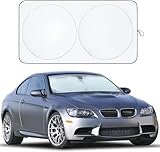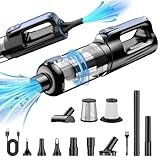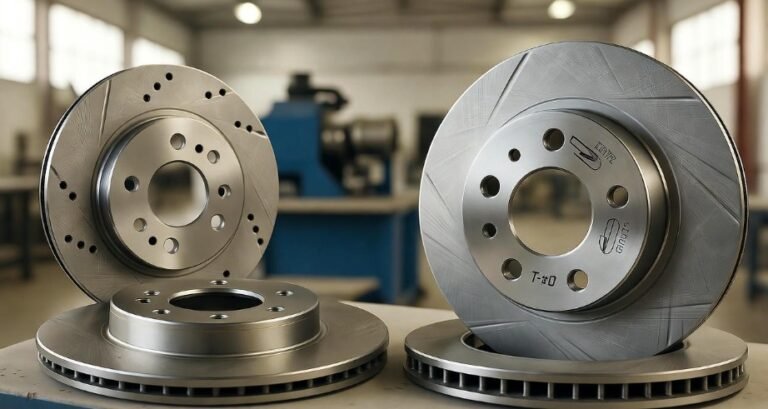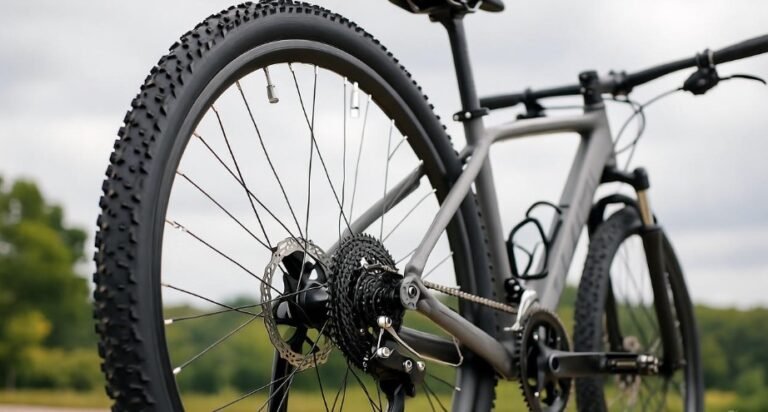How to Master 10-Inch Golf Cart Tire Pressure Like a Pro
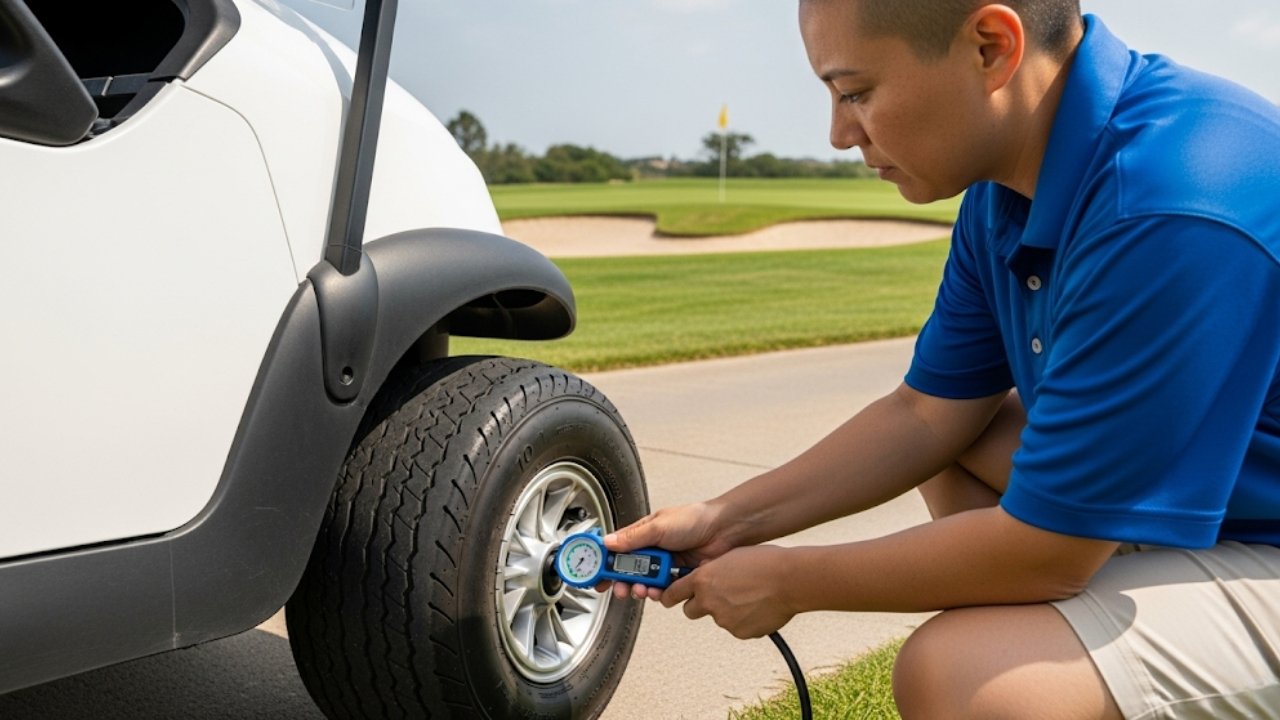
Let’s be honest—golf carts aren’t something most people stress over. They’re fun, relaxing, and meant for slow rides under the sun. But here’s a surprise: something as small as your 10-inch golf cart tire pressure can make or break the whole experience.
Ever had that odd, bumpy ride? Or maybe you noticed your battery draining faster than usual? That’s the silent way your tires scream, “Help me!” I learned this the hard way when my golf cart started dragging like it was pulling a mountain. A neighbor chuckled and said, “Check your tire pressure, buddy!” And boy, he was right.
In this guide, we’re diving deep—but in a simple, easygoing way. No fancy jargon. Just real talk, real facts, and a little humor along the ride. Let’s roll!
What Is the Ideal Tire Pressure for 10-Inch Golf Cart Tires?
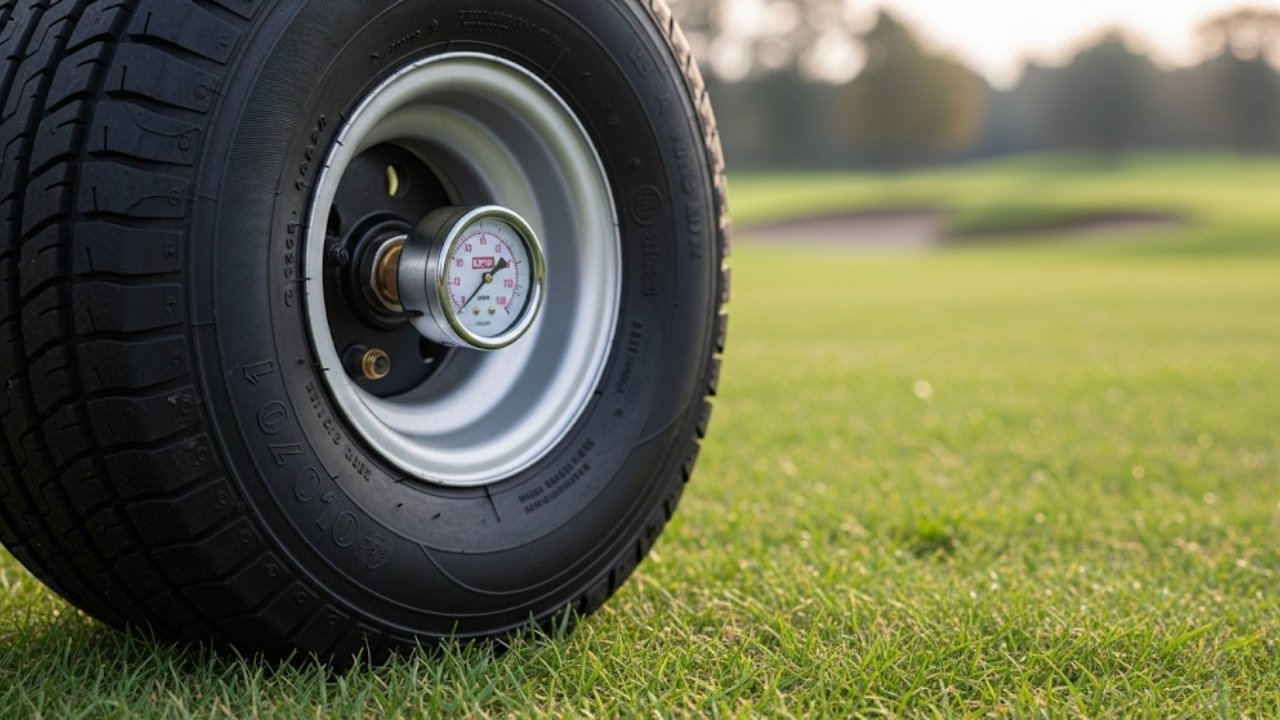
Different brands, terrains, and usage styles can nudge that number slightly up or down.
General PSI Guide for 10-Inch Tires:
| Type of Terrain | Recommended PSI |
|---|---|
| Pavement | 20–22 PSI |
| Grass | 18–20 PSI |
| Sand or Gravel | 15–18 PSI |
| Hills/Inclines | 22 PSI |
But don’t just take this table and run. Think of 10-inch golf cart tire pressure like your morning coffee. Some like it strong, some like it mild. Your usage determines your PSI. If you use your cart on smooth concrete paths, a higher PSI gives better range and speed. But lower pressure offers better grip on uneven or off-road terrain.
How Incorrect Tire Pressure Affects Your Golf Cart
I once pumped my tires to 28 PSI, thinking “more is better.” The result? Every little pebble felt like a speed bump. My cart felt like it wanted to bounce off the road. And when I underinflated them to 14 PSI, it felt like I was dragging a boat anchor.
Let me break down what happens when your 10-inch golf cart tire pressure is off:
-
Overinflated Tires:
-
Bumpy ride
-
Uneven tread wear
-
Less traction on wet grass
-
Reduced shock absorption
-
-
Underinflated Tires:
-
Sluggish performance
-
Lower battery range
-
Wobbly, unsafe feeling
-
More wear on tire edges
-
That’s why it’s not about guessing. It’s about finding that sweet spot—just like cooking rice. Too little water, it’s crunchy. Too much, it’s mushy. Same thing here.
How to Check Tire Pressure the Right Way
Think it’s complicated? Nah. Checking 10-inch golf cart tire pressure takes less time than scrolling through your phone.
Here’s how I do it:
Step-by-Step Pressure Check:
-
Buy a tire pressure gauge. Digital or analog—it doesn’t matter. You can find one for under $10.
-
Check when tires are cool. After driving, heat builds up, inflating the PSI. So check first thing in the morning.
-
Remove valve cap.
-
Press the gauge onto the valve. It’ll show you the current PSI instantly.
-
Adjust as needed. Add air or release using the pin inside the valve.
Pro Tip: I keep a small portable air compressor in my garage. It saves gas station trips, and it’s a lifesaver when the tire is super low.
The Link Between Tire Pressure and Battery Life
Now here’s something most cart owners don’t realize. Your battery life is directly tied to your 10-inch golf cart tire pressure.
Let me paint a picture.
Imagine riding a bicycle with flat tires. It’s exhausting, right? You pedal harder, burn more energy, and sweat like it’s summer in Dhaka. That’s exactly what your electric motor goes through when your tire pressure is low. It has to work harder, which drains your battery faster.
In fact, experts say underinflated tires can reduce range by 10–15%. That’s like losing 3 holes in a full round of golf!
So, if you’re finding that your fully charged cart is giving you fewer miles, check those tires before blaming the battery. You might just save yourself from a costly replacement.
Seasonal Changes and Tire Pressure: What You Must Know
This one hits especially hard if you live in places where the temperature swings like a pendulum.
As the air cools down in winter, it shrinks. That means your 10-inch golf cart tire pressure drops without you doing a thing. Conversely, in the heat of summer, air expands, making pressure rise.
Rule of Thumb: For every 10°F drop in temperature, you lose 1–2 PSI in your tires.
I learned this last December when my cart started pulling to one side. The culprit? Left tires had dropped to 15 PSI while the right were still at 18. A quick check and refill fixed it.
So, make it a habit to check pressure:
-
At the start of each season
-
After extreme weather changes
-
Before long rides
Your cart (and your back) will thank you!
Should Front and Rear Tire Pressures Be the Same?
This question stumped me too. You’d think all four tires should be equal, right? But not always.
Depending on your cart’s load balance, rear tires might need slightly more pressure, especially if you often carry passengers or gear at the back.
For my Yamaha cart, I use:
-
Front Tires: 20 PSI
-
Rear Tires: 22 PSI
That gives me better handling and keeps the rear from sagging when loaded. It’s like adjusting your backpack straps—tight in the back keeps things balanced.
If unsure, check your owner’s manual or experiment safely. But don’t let one side drop more than 2–3 PSI below the other, or you’ll feel it in every turn.
Top Signs Your Tire Pressure Is Off (Even Without a Gauge)
Not everyone checks pressure weekly. I get it. Life gets busy. But your 10-inch golf cart tire pressure often tells on itself if you know what to look for.
Here are red flags you can feel or see:
-
Spongey Steering: Feels like the wheel has no response.
-
Bumpy Ride: Especially when overinflated.
-
Increased Charging Time: Battery drains faster.
-
Uneven Wear Marks: One side of the tire wears out faster.
-
Loud Rolling Noise: Especially on pavement.
One time, I ignored a thudding sound and thought it was the road. Nope—rear left tire was down to 12 PSI! Trust your senses. They’re often smarter than gauges.
Long-Term Maintenance: Keeping Your Tire Pressure Just Right
Keeping your 10-inch golf cart tire pressure perfect isn’t a one-time job—it’s a small habit that pays big over time. I like to compare it to brushing your teeth. It doesn’t take long, but doing it regularly keeps bigger problems away.
Here’s what works for me:
-
Monthly Pressure Checks: Set a reminder on your phone. I do mine on the first Sunday of every month. Takes just 5 minutes.
-
Pre-Ride Inspection: Just a quick look before you hop on. If a tire looks lower than the rest, give it a check.
-
Invest in a Quality Gauge: Those cheap plastic ones? Toss them. I use a mid-range digital gauge—accurate and easy to read.
-
Tire Rotation Every 6 Months: Like with cars, rotating the tires helps even out wear. Especially important if you carry passengers often.
Don’t overthink it. Treat your golf cart like your daily shoes—check for comfort, performance, and wear now and then. It’ll reward you with smooth rides for years.
Best Tools and Accessories to Monitor Tire Pressure
Let’s talk gear. You don’t need a full toolbox to manage 10-inch golf cart tire pressure, but a few small gadgets can make your life easier.
Must-Have Tools:
-
Digital Tire Pressure Gauge: More precise than analog ones. Look for one with a backlit screen if you check in dim light.
-
Portable Air Compressor: You can find 12V or battery-powered ones that are small enough to keep in your cart.
-
Valve Stem Caps with Indicators: These are clever—if your pressure drops, the cap changes color. A quick glance tells you everything.
-
Tire Inflator with Auto-Stop: Saves overinflating. Set your target PSI and let it do the job.
You don’t need everything at once. I started with just a pressure gauge and a bicycle pump. Over time, I added tools as I saw the need.
Lifted Golf Carts: Do Tire Pressure Needs Change?
Lifted carts with 10-inch wheels are a whole different beast. You’ve got larger tires, often wider tread, and you’re likely doing more off-road driving.
With lifted carts, the golden rule still applies: balance performance and comfort. But your 10-inch golf cart tire pressure might need a slight tweak.
Tips for Lifted Carts:
-
Start with 18 PSI and adjust up or down based on how it feels.
-
Heavier tires = More PSI. Don’t go above 25 PSI unless specified.
-
Use reinforced sidewalls. They hold pressure better and handle bumps smoother.
When I first lifted my cart, I kept the pressure too low, thinking it would absorb bumps better. Instead, I got wobble and poor control. Once I bumped it up to 20–22 PSI, it handled like a dream.
When to Replace Tires Instead of Adjusting Pressure
Sometimes, no matter how much air you add, your tires still feel “off.” That’s your cue. Your tires might be the problem—not the pressure.
Signs You Need New Tires:
-
Cracked Sidewalls
-
Bald Tread
-
Frequent Pressure Loss
-
Bubble Formations
-
Unusual Noise Even at Correct PSI
One summer, I had to inflate my front right tire every 3 days. Thought it was the valve. Turned out there was a hairline crack in the rubber. Replacing it fixed the problem permanently.
New tires aren’t just about grip—they also hold 10-inch golf cart tire pressure more consistently and save your battery in the long run.
Golf Cart Tire Pressure and Ride Comfort: Real-Life Feels
Let’s get real here. When your 10-inch golf cart tire pressure is spot on, you’ll feel the difference.
-
It’s like riding a cloud—not too soft, not too rough.
-
The steering feels lighter and more responsive.
-
Even the little “hum” of the tires on pavement sounds right.
My cousin once said, “Dude, your cart feels like a Tesla on a golf course!” That’s the power of perfect tire pressure. It turns a basic cart into a luxury experience. All it takes is a few PSI adjustments.
This isn’t just about machines—it’s about moments. Quiet rides through the morning fog, smooth drives to the 18th hole, sunset joyrides with the kids. Comfort matters. And pressure is a big part of that comfort.
FAQs: Your Tire Pressure Questions, Answered
Here are some common and surprising questions I get asked—and have asked myself—about 10-inch golf cart tire pressure:
1. Can I use car tire pressure as a guide for my golf cart?
Nope! Car tires usually need 30–35 PSI. Golf cart tires are lower-pressure and overinflating them can be dangerous.
2. Is 25 PSI too much for a 10-inch tire?
Usually, yes. Most 10-inch golf cart tires cap at 22 PSI. Always check the sidewall for the manufacturer’s maximum rating.
3. How often should I check my golf cart tire pressure?
At least once a month, and always before long rides or if the cart feels “off.”
4. What’s the lowest safe pressure for 10-inch tires?
15 PSI is generally the safe minimum. Below that, you risk poor handling and tire damage.
5. Do I need different PSI for front and back tires?
Sometimes, yes. Especially if your cart carries more weight at the back. A 2–3 PSI difference is normal.
6. Does tire pressure affect speed?
Absolutely. Overinflated tires may give you more speed on flat ground but less control. Underinflated tires slow you down and wear out faster.
7. Can hot weather cause overinflation?
Yes. In summer, PSI can rise as air expands. Always check pressure when tires are cool.
8. Are all 10-inch golf cart tires the same?
No. Some are for pavement, some for turf, some for off-road. Each type may have different ideal PSI levels.
Final Thoughts: Don’t Underestimate the Power of Tire Pressure
When we talk about 10-inch golf cart tire pressure, it may sound like a boring detail. But it’s one of those little things that has a ripple effect. From comfort to performance to battery life—it all ties back to that magic PSI number.
I’ve been there—confused, frustrated, and unsure of what’s wrong with my cart. But now, checking and adjusting tire pressure is just part of the routine. Like topping up fuel or charging the battery, it’s a small thing with big rewards.
So next time your cart feels weird, slow, or just not right—take a deep breath, grab that tire gauge, and see what those tires are trying to tell you.
Because when your ride is smooth, your game is better, your guests are happier, and your adventures become a joy—all thanks to something as simple as the right tire pressure.

